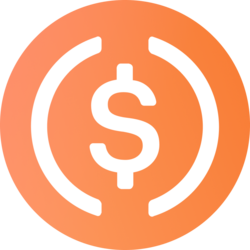Halloween is a fun and scary time for kids and adults alike, but why do the celebrations seem to start so much earlier each year? Decades ago, when I was young, Halloween was a much smaller affair and people didn’t start preparing until mid-October. Today, in my neighborhood near where I grew up in Massachusetts, Halloween decorations begin to appear in the middle of summer.
What’s changed is not just when we celebrate, but how: Halloween evolved from a simple popular tradition into a massive commercial event. As a business school professor who studied the economics of holidays for years, I’m amazed at how the Halloween business has grown. And understanding why it’s such a big business may help explain why it’s dragging earlier and earlier.
The business behind the celebration
Halloween’s roots lie in a Celtic holiday honoring the dead, later adapted by the Catholic Church as a time to remember the saints. Today it is largely a secular celebration, giving people of all backgrounds the opportunity to dress up, engage in fantasy, and face their fears safely.
That broad appeal fueled explosive growth. The National Retail Federation has surveyed Americans about their Halloween plans every September since 2005. Back then, just over half of Americans said they planned to celebrate. By 2025, nearly three-quarters said they would do so, a big jump in 20 years.
And people plan to shell out more money than ever. Total spending on Halloween is expected to hit a record $13 billion this year, according to the federation, a nearly four-fold increase over the past two decades. Adjusting for inflation and population growth, I found that the average American will spend an expected $38 on Halloween this year, compared to just $18 per person in 2005. That’s a lot of candy corn.
You may be interested in: For Hooters founders, saving the chain is a higher calling: ‘America needs us’
Sweets imports show a similar trend. September was long the key month for the sweets trade, with imports about a fifth higher than during the rest of the year. In September 2005, the United States imported about $250 million of candy. By September 2024, that figure had tripled to about $750 million.
This is part of a larger Halloween trend that’s becoming much more professional. For example, when I was a child, it was not unusual for households to hand out brownies, candied apples, and other homemade treats to trick-or-treaters. But because of safety concerns and food allergies, Americans were warned for decades to stick to individually wrapped, mass-produced candy.
The same change occurred with the costumes. Years ago, many people made their own; Nowadays, store-bought costumes dominate, even for pets.
Why does Halloween keep coming early?
While there is no definitive research establishing why Halloween seems to start earlier each year, the increase in spending is a major factor.
Halloween items are seasonal, which means no one wants to buy giant plastic skeletons on November 1st. As total spending grows, retailers order more inventory, and the cost of storing increasing quantities of unsold items until next year becomes a larger consideration.
Once a season’s retail footprint becomes large enough, retailers begin ordering and displaying merchandise long before it is actually needed. For example, winter coats start appearing in stores in early fall and usually disappear when it starts snowing. It’s the same with Halloween: Retailers put out merchandise early to make sure they’re not left with unsold products once the season ends.
They also often set prices strategically, charging full price when items first hit shelves, attracting eager early shoppers, and then lowering prices closer to the holidays. This clears shelves and warehouses, leaving room for the next shopping season.
Over the past two decades, Halloween has become a larger and larger commercial holiday. The growth in people enjoying the holiday and increased spending has made Halloween a great gift for businesses. The big trick for retailers is to prevent these celebrations from starting before the Fourth of July.
*Jay L. Zagorsky is an associate professor at Boston University’s Questrom School of Business.
This article was originally published on The Conversation/Reuters
Follow us on Google News to always stay informed












































